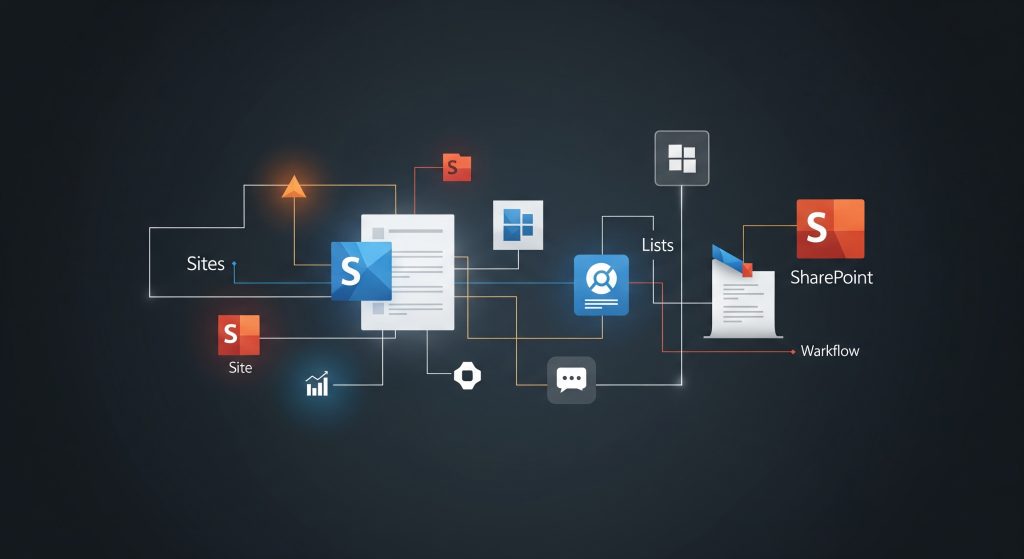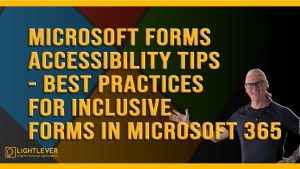Simple tools that make your intranet actually useful — even without an IT team.
🧩 Why Web Parts Matter
If your SharePoint site feels boring, cluttered, or confusing — the problem isn’t SharePoint. It’s how it’s built.
Web Parts are the building blocks of every SharePoint page. When used well, they make your company intranet:
Easier to navigate
More informative
Actually used by your team
This post shows you the 5 web parts we use in almost every SharePoint setup for small businesses and nonprofits — no coding required.
🔧 What Is a Web Part?
A Web Part is a block of content you can drop onto your SharePoint pages. Think of it like a widget — one block for news, one for links, one for docs, etc.
When building or editing a page, just click the “+” icon to add a new one.
Now, let’s look at the ones you’ll actually use.
✅ 1. Quick Links Web Part
🕒 Why it matters: Your team needs to find things fast.
Use this to create big, obvious buttons for:
Policies
Templates
Timesheets
“Start Here” onboarding pages
Project folders
💡 Tip: Organize them into groups like “HR,” “Admin,” or “Clients” to keep the page tidy.
✅ 2. Document Library Web Part
📁 Why it matters: People waste time digging for documents.
This lets them access a full folder or file library right on the homepage.
Use it to display:
SOPs
Marketing materials
HR forms
Training guides
🔐 Make sure permissions are set properly so people only see what they’re allowed to access.
✅ 3. Hero Web Part
🎯 Why it matters: It grabs attention.
The Hero web part shows large, image-based tiles with links — great for:
Highlighting company news or updates
Linking to key tools
Creating a “Start Here” area for new hires
✨ Bonus: Add images or icons to make it visually appealing without looking too corporate.
✅ 4. List Web Part (with Microsoft Lists)
📋 Why it matters: Track anything — without Excel hell.
Use this to:
Track requests, ideas, or vacation dates
Create internal forms
Let your team submit content or updates
It’s way more flexible than you’d expect, and it’s beginner-friendly if you use Microsoft Lists to create it.
✅ 5. Text Web Part
✍️ Why it matters: Sometimes you just need to say something.
The Text web part is ideal for:
Adding welcome messages
Explaining how to use the page
Embedding reminders or helpful notes
💬 Keep your tone human. “Welcome to the Team Hub” feels better than “This site is for document access.”
🎁 Bonus: Combine Them for Power
Here’s a layout you can steal today:
| Section | Web Part |
|---|---|
| Top Banner | Hero |
| Left Column | Quick Links + Document Library |
| Right Column | Text + List |
| Bottom | Another Hero or News |
This layout works well on Communication Sites and Team Sites, and helps your users know exactly where to go.
👀 What to Avoid
❌ Don’t overbuild — too many web parts make the page messy
❌ Don’t rely on default text or filler links
❌ Don’t forget to test on mobile (some layouts get squishy)
🛠 Want Help Putting It Together?
If you’d rather skip the overwhelm and get it done right the first time, I’ve built a complete toolkit to guide you.
🚀 Fast Track Your Intranet Setup
The Fast Track SharePoint Setup Kit gives you:
Step-by-step instructions to build 10 intranet tools using these web parts
30+ templates for onboarding, communication, and planning
A printable checklist to avoid common mistakes
A 1-hour consultation (only available with the kit)
👉 Grab the toolkit here or book a session — I’d love to support you.
🧠 Final Thought
You don’t need fancy coding or enterprise features.
You just need the right building blocks — and to use them intentionally.
Start simple. Focus on what your team needs every week.
The rest can grow from there.





